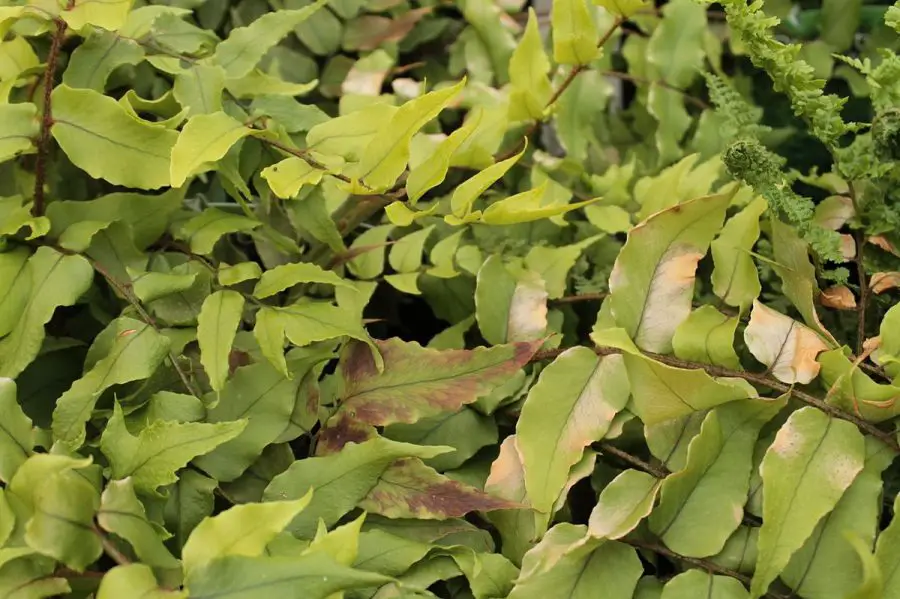
Looking for a lush, easy-to-grow houseplant? With the right approach to Japanese Holly Fern indoor care, you can enjoy glossy, holly-like fronds that thrive in your home year-round.
This fern is low-maintenance, elegant, and perfect for brightening up any indoor space.
Discover the secrets to keeping your Japanese Holly Fern thriving indoors!
Our comprehensive guide to Japanese Holly Fern indoor care has got you covered. Here’s some quick tips:
- Japanese Holly Fern indoor care involves placing the plant in indirect light.
- Maintaining high humidity and using well-draining soil.
- Water the fern when the top inch of soil feels dry.
- It’s a fairly easy plant to care for and is well-suited for indoor conditions.
Why Grow Japanese Holly Fern?

Holly Fern Plants Live Houseplants, Ferns Live Plants Indoor Plants Live Houseplants, Live Fern Plant Low Light House Plants Indoors Live Outdoor Plants and Flowers, House Plant by Plants for Pets
Welcome, fellow plant lovers! Are you looking for a stunning, low-maintenance indoor plant?
Look no further than the Japanese holly fern. With the right indoor care, your fern will be the envy of all your friends!
Let’s dive into Japanese holly fern indoor care.
Japanese Holly Fern Indoor Care Introduction

Are you on the hunt for a new houseplant to add to your collection?
Have you thought about keeping indoor ferns?
There are many suitable fern varieties but today we are going to look at Japanese Holly Fern indoor care.
Look no further than the Japanese Holly Fern! Not only is this plant a stunning addition to any indoor space, but it’s also easy to care for.
In this blog post, we’ll cover everything you need to know about Japanese Holly Fern indoor care, so you can keep your new plant healthy and thriving for years to come.
Let’s get started!
What is the Japanese Holly Fern?

Cyrtomium falcatum, is known better by its common names of Japanese Holly Fern and House Holly Fern is a popular houseplant that originates from Japan, Korea, and China.
It’s a hardy plant with shiny, dark green fronds that resemble holly leaves.
This plant can thrive in both indoor and outdoor settings, making it a versatile choice for any plant enthusiast.
Why is indoor care important for houseplants?
Indoor care is crucial for houseplants because they rely on us to provide the ideal environment they need to survive and thrive.
Indoor plants are often subject to less-than-ideal conditions such as low light levels, fluctuating temperatures, and dry air.
By providing proper indoor care, we can ensure that our plants remain healthy, happy, and vibrant.
What will this blog post cover?
In this blog post, we will cover everything you need to know about Japanese Holly Fern indoor care.
From understanding the plant’s light, temperature, and humidity requirements to potting and repotting, pruning and propagation, common problems and pests, and more.
We will provide you with all the necessary information to keep your Japanese Holly Fern thriving indoors.
Background on Japanese Holly Fern
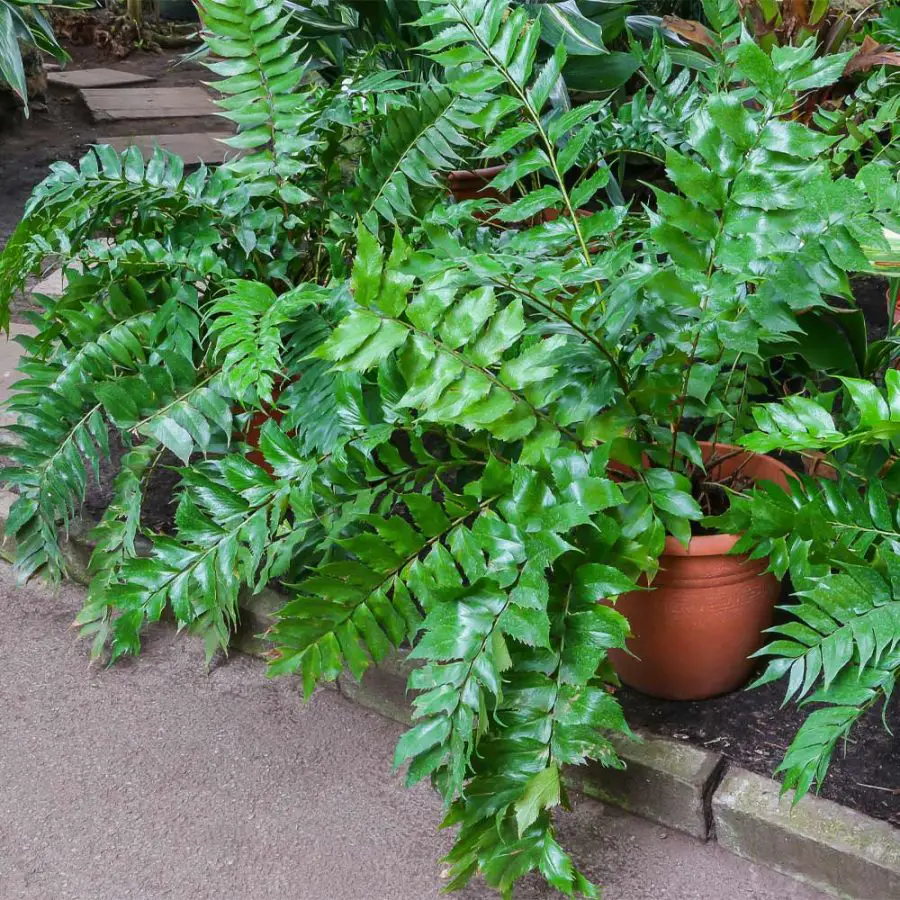 Let’s dive into the background of our beloved Japanese Holly Fern!
Let’s dive into the background of our beloved Japanese Holly Fern!
As we mentioned earlier, this plant is native to Asia, specifically Japan, Korea, and China.
It’s an evergreen fern that grows in a rosette shape, with shiny, dark green fronds that can grow up to 2 feet long.
While it’s primarily grown as a houseplant, Japanese Holly Fern can also be found in outdoor woodland gardens and rock gardens in regions with mild climates.
Its unique holly-like leaves make it a standout addition to any plant collection.
Description of the Japanese Holly Fern
The Japanese Holly Fern is a beautiful plant with unique features that make it stand out from other ferns.
It has dark green, glossy leaves that are shaped like holly leaves and grow in a rosette pattern.
The fronds can grow up to 2 feet long and are divided into smaller leaflets.
This fern is an evergreen plant, meaning it doesn’t shed its leaves in the winter, making it a great indoor plant all year round.
Origin and history of the plant
The Japanese Holly Fern has a long and interesting history, with records of it dating back to ancient Japan.
In Japan, it’s often used as a decorative plant in gardens and in bonsai arrangements.
It was introduced to Europe in the 1800s and has since become a popular houseplant around the world.
Today, the Japanese Holly Fern is widely cultivated and can be found in many different regions.
Varieties of Japanese Holly Fern
There are several varieties of Japanese Holly Fern, each with unique features.
Some popular varieties include ‘Rochfordianum’, which has fronds with deeply divided leaflets, and ‘Fortunei’, which has wider fronds with less divided leaflets.
‘Falcon’s Foot’ is another popular variety with fronds that resemble the shape of a falcon’s foot.
Regardless of the variety you choose, Japanese Holly Ferns are sure to add a touch of elegance to your indoor space.
Japanese Holly Fern Care Reference Guide
| Characteristic | Details |
|---|---|
| Common Name | Japanese Holly Fern, House Holly Fern |
| Botanical Name | Cyrtomium falcatum |
| Native Habitat | Japan, Korea, China |
| Plant Type | Evergreen perennial fern |
| Growth Pattern | Clump-forming, rosette of arching fronds |
| Mature Size | 1–2 feet tall and wide |
| Watering | Keep soil evenly moist; water when top inch dries |
| Light/Sun Exposure | Bright, indirect light; tolerates partial shade |
| Soil Type | Well-draining, rich in organic matter |
| Soil pH | Slightly acidic (6.0–6.5) |
| Temperature | 60–75°F (15–24°C) |
| Humidity | High humidity preferred; mist or use a humidifier |
| Bloom Time & Flower Color | Non-flowering; grown for foliage |
| Potential Problems | Yellowing fronds, root rot from overwatering, scale, mealybugs, spider mites |
| Repotting | Every 1–2 years in spring with fresh soil |
| Hardiness Zones (USDA) | 7–10 (often grown indoors outside these zones) |
Indoor Conditions for Japanese Holly Ferns

Now that we’ve covered the background of the Japanese Holly Fern, let’s talk about the ideal indoor conditions needed to keep this plant happy and healthy.
Like all plants, the Japanese Holly Fern has specific requirements when it comes to light, temperature, and humidity.
Understanding these requirements is key to ensuring that your fern thrives in its indoor environment.
In this section, we’ll cover everything you need to know about creating the perfect indoor conditions for your Japanese Holly Fern.
Light requirements for the plant
The Japanese Holly Fern is a shade-loving plant that prefers indirect or filtered light.
While it can tolerate some direct sunlight, too much direct sunlight can scorch its leaves.
So it’s best to make sure it also receives some partial shade throughout the day too.
Ideally, you should place your fern in a location that receives bright, indirect light for a few hours a day.
You can also use artificial light sources, such as fluorescent or LED lights, to supplement the natural light if needed.
Temperature and humidity requirements
The Japanese Holly Fern prefers moderate temperatures between 60-75°F (15-24°C).
It’s important to keep the plant away from drafts and air conditioning vents, as sudden changes in temperature can stress the plant.
As for humidity, this fern prefers high humidity levels, which can be achieved by placing a humidifier near the plant or by misting its leaves regularly with water.
You can also place a tray filled with water and pebbles underneath the plant to increase humidity levels.
Soil and watering requirements
The Japanese Holly Fern prefers well-drained soil that’s rich in organic matter, such as peat moss or compost. It also prefers slightly acidic soil.
It’s important to keep evenly moist soil, but not waterlogged, as overwatering can lead to root rot.
Water your fern when the top of the soil feels dry to the touch, and make sure to use room-temperature water.
In general, this plant requires less water during the winter months when it’s in its dormant phase.
Fertilizing Japanese Holly Ferns
Fertilizing your Japanese Holly Ferns can help to promote healthy growth and vibrant foliage.
Here are some tips on how to properly fertilize your ferns:
Choose the right fertilizer: When choosing a fertilizer for your Japanese Holly Ferns, look for one that is specifically formulated for ferns.
These fertilizers will typically have a balanced ratio of nitrogen, phosphorus, and potassium, as well as micronutrients like iron and magnesium, which are essential for healthy fern growth.
Apply fertilizer in the spring:
The best time to fertilize your Japanese Holly Ferns is in the spring, just as new growth is starting to emerge.
Avoid fertilizing in the fall or winter, as this can encourage new growth that may be damaged by cold temperatures.
Use a slow-release fertilizer:
Slow-release fertilizers are ideal for ferns, as they release nutrients gradually over time, which can help to prevent over-fertilization and burn damage.
Follow the instructions on the fertilizer package carefully to ensure that you apply the correct amount.
Water thoroughly after fertilizing:
After applying fertilizer, be sure to water your ferns thoroughly to help the nutrients soak into the soil and reach the roots.
Watering will also help to prevent fertilizer burn by diluting any excess fertilizer that may be present in the soil.
Monitor for signs of over-fertilization:
Over-fertilizing your Japanese Holly Ferns can cause the tips of the fronds to turn brown and dry out.
If you notice any signs of over-fertilization, flush the soil with water to help remove any excess nutrients.
By following these tips, you can help to ensure that your Japanese Holly Ferns receive the nutrients they need to thrive and remain healthy.
Fish emulsion liquid fertilizer
Fish emulsion can be a good fertilizer to use for Japanese Holly Ferns, as it is a natural and organic source of nutrients.
Fish emulsion is made from the remains of fish that have been processed for human consumption, and it is typically high in nitrogen, which is important for healthy fern growth.
One of the benefits of using fish emulsion is that it can be easily absorbed by plants, and it can help to promote strong root development and healthy foliage.
However, fish emulsion can have a strong odor, which can be unpleasant for some people, and it should be used in moderation to avoid over-fertilization.
If you decide to use fish emulsion as a fertilizer for your Japanese Holly Ferns, be sure to follow the instructions on the package carefully and apply it in the spring, when new growth is starting to emerge.
You should also water your ferns thoroughly after applying the fish emulsion to help the nutrients soak into the soil and reach the roots for best results.
Potting and Repotting Japanese Holly Ferns
Potting and repotting your Japanese Holly Fern is an essential part of its care routine, and it’s important to get it right to ensure the plant’s health and longevity.
A good potting mix and proper drainage are crucial to the plant’s success, as is understanding when it’s time to repot your fern.
In this section, we’ll go over everything you need to know about potting and repotting your Japanese Holly Fern, from choosing the right pot and soil to the proper techniques for repotting.
Choosing the right pot
Choosing the right pot size is important for the overall health and growth of your Japanese Holly Fern.
You’ll want to choose a pot that’s slightly larger than the plant’s current one, as this will allow room for growth without overwhelming the roots.
Make sure the pot has drainage holes to prevent water from accumulating at the bottom.
How to repot the plant
When it’s time to repot your Japanese Holly Fern, gently remove it from its current pot and loosen the roots.
Add fresh potting soil to the bottom of the new pot, and place the plant in the center.
Fill in the sides with more potting soil, and gently press down to secure the plant in place.
Water the plant thoroughly and let it drain before placing it back in its normal spot.
Frequency of repotting
The frequency of repotting your Japanese Holly Fern will depend on its growth rate and the size of the pot it’s currently in.
In general, you should plan to repot your fern every 1-2 years, or whenever you notice the roots starting to become overcrowded.
Early spring is a good time to repot your fern so it can benefit from the larger pot and fresh soil throughout the growing season.
Over time, the soil in the pot can become depleted of nutrients, which can affect the health and growth of your plant.
Repotting with fresh soil can help rejuvenate the plant and give it the nutrients it needs to thrive.
Pruning and Propagation of Japanese Holly Ferns
Pruning and propagation are important aspects of caring for your Japanese Holly Fern.
Pruning your fern will help to encourage new growth and maintain its shape, while propagation can allow you to create new plants from your existing fern.
In this section, we’ll cover everything you need to know about pruning and propagating your Japanese Holly Fern, including the best time to prune, the tools you’ll need, and how to propagate the plant successfully.
Why pruning is important
Pruning is an essential part of Japanese Holly Fern care, as it helps to promote healthy growth and prevent the plant from becoming too bushy.
Pruning your fern will also help to remove any dead or damaged fronds, which can impact the plant’s overall health.
How to prune the plant
To prune your Japanese Holly Fern, use a pair of clean, sharp scissors or pruning shears to cut away any dead or damaged fronds.
You can also trim back any fronds that are getting too long or are starting to curl or brown at the tips.
Be sure to only remove a small portion of the frond at a time, as cutting too much can damage the plant.
How to propagate the plant
Propagating your Japanese Holly Fern can be done by dividing the plant, or by taking cuttings and rooting them in water or soil.
To divide the plant, gently remove it from its pot and separate the root ball into two or more sections.
Replant each new fern in a separate pot with fresh soil. Place your new ferns in a warm, shady location until new growth occurs.
To propagate with cuttings, select a healthy frond and cut it from the plant, leaving a small stem attached.
Place the cutting in water or soil, keeping it moist until it starts to root and develop new growth.
Propagating Japanese Holly Fern From Spores
Propagating Japanese Holly Fern from spores is a relatively simple process, but it requires some patience and attention to detail. Here are the steps to follow:
Collect spores: Look for mature Japanese Holly Fern fronds that have brown patches on the underside of the fronds.
These brown patches are clusters of spores. Use a sharp knife or scissors to cut the fronds at the base and collect them in a paper bag.
Dry spores: Leave the fronds in the paper bag for a few days until the spores have dried completely.
You can tell that they are dry when they turn a dark brown color and easily come off when touched.
Prepare the soil: Fill a small pot with a mixture of peat moss and sand, and moisten the soil with water.
Sow spores: Sprinkle the spores over the soil surface and cover them with a thin layer of peat moss.
Keep the pot in a warm, humid place, and mist the soil with water regularly to keep it moist.
Wait: It can take several weeks for the spores to germinate, so be patient. Keep the pot covered with a plastic bag to help maintain humidity.
Transplant: Once the spores have germinated and the ferns have grown to about an inch in height, carefully transplant them into individual pots filled with potting soil. Keep the pots in a bright, but indirect light and continue to water them regularly.
With proper care, the newly propagated Japanese Holly Ferns should grow into healthy plants in a few months.
Common Problems and Pests of Japanese Holly Ferns
As much as we love our Japanese Holly Ferns, they are not immune to problems and pests.
In this section, we’ll cover some of the most common issues you may encounter when caring for your fern, and provide tips on how to address them.
From yellowing fronds to pesky insects, we’ll help you identify and resolve any issues that may arise, so your Japanese Holly Fern can thrive in your home.
Common issues that may arise with the plant
Yellowing fronds, brown spots, fungal spots, and wilting are some of the most common issues that may arise when caring for a Japanese Holly Fern.
These problems can be caused by a variety of factors, including over or underwatering, inadequate light, pests, and disease.
How to diagnose and treat problems
To diagnose and treat issues with your Japanese Holly Fern, start by examining the plant and the surrounding environment.
Check the soil moisture, lighting conditions, and temperature to make sure they are suitable for the plant.
If you suspect a pest or disease problem, look for signs such as webbing, spots, or discoloration.
Once you’ve identified the problem, take steps to treat it, such as adjusting watering or lighting, applying an insecticide or fungicide, or removing affected fronds.
Common pests and how to deal with them
Scale, mealybugs, scale insects, and spider mites are some of the most common pests that can affect Japanese Holly Ferns.
To deal with these pests, start by isolating the affected plant and treating it with an appropriate insecticide or soap solution.
Be sure to follow the instructions carefully, and repeat the treatment as necessary to entirely eliminate the pests.
Additionally, regularly inspecting and cleaning your plant can help prevent pest infestations from occurring in the first place.
Japanese Holly Fern FAQs
When it comes to the Japanese Holly Fern, there are quite a few questions that people commonly ask about its care and characteristics.
This fern has specific needs when it comes to light, spreading habits, and its lifespan. Understanding these needs will help you keep your Japanese Holly Fern healthy and lush.
Q: Do Japanese holly ferns spread?
A: No, Japanese Holly Ferns are clump-forming plants that generally do not spread aggressively.
They grow in tight clusters but can be divided to create new plants.
Q: Do Japanese holly ferns like sun or shade?
A: Japanese Holly Ferns prefer indirect light or partial shade.
Direct sunlight can scorch the leaves, so it’s best to keep them out of intense light conditions.
Q: Is Japanese Holly Fern a perennial?
A: Yes, the Japanese Holly Fern is a perennial plant, meaning it can survive for several years with proper care.
It keeps its leaves year-round in mild climates.
Q: Can Holly ferns take full sun?
A: No, Holly ferns generally prefer shaded or partially shaded conditions.
Full sun can result in scorched leaves and increased water requirements.
Japanese Holly Fern Indoor Care Final Thoughts

Well, we’ve covered a lot of ground when it comes to Japanese Holly Fern indoor care!
From learning about the plant’s background and characteristics to understanding how to properly care for it, to troubleshooting issues that may arise.
You should now be well-equipped to care for your own Japanese Holly Fern.
Remember to provide it with adequate light and moisture, regularly prune and propagate it, and keep an eye out for any potential problems.
With a little bit of love and attention, your fern can thrive in your home and bring a touch of green to your space.
Recap of the importance of indoor care for Japanese Holly Ferns
To recap, indoor care is crucial for the health and well-being of Japanese Holly Ferns.
These plants require specific conditions to thrive, including adequate light, humidity, and moisture.
Neglecting these factors can lead to a variety of problems, including yellowing fronds, brown spots, and wilting.
However, with proper care and attention, your Japanese Holly Fern can flourish and provide a beautiful touch of green to your indoor space.
Final tips for taking care of the plant
Before we wrap things up, here are a few final tips to help you care for your Japanese Holly Fern.
First, be sure to use a well-draining potting mix and a pot with good drainage to prevent waterlogging.
Second, avoid overwatering your fern, as this can cause root rot and other issues.
Finally, if you’re struggling to find a suitable location with the right amount of light, consider using a grow light to provide your fern with the light it needs to thrive.
Try growing the Japanese Holly Fern indoors
In conclusion, growing a Japanese Holly Fern indoors can be a rewarding and enjoyable experience, as long as you take the time to understand the plant’s needs and provide it with the care it requires.
Don’t be afraid to experiment with different conditions, such as lighting and humidity, to find what works best for your fern.
With a little bit of effort and patience, you can create a beautiful and thriving indoor garden with your Japanese Holly Fern.
🌿 Indoor Fern Growing Guides
Want to fill your home with lush, vibrant greenery? These expert indoor fern guides will help you grow everything from Boston ferns to exotic Staghorns with ease!
- 🌿 Indoor Ferns Care (Pillar Guide)
- 🌱 Asparagus Fern Indoor Care
- 🍃 Boston Fern Care Indoors
- 🌾 Japanese Bird’s Nest Fern
- 🪴 Crocodile Fern Indoor Care
- 🍀 Maidenhair Fern Care Indoors
- 🌳 Japanese Holly Fern Indoor Care
- 🪹 Caring for Bird’s Nest Fern Indoors
- 🪷 Staghorn Fern Care Indoors
- See all articles in our Indoor Ferns category







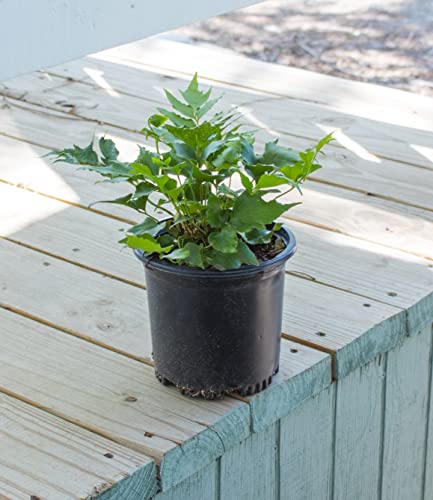


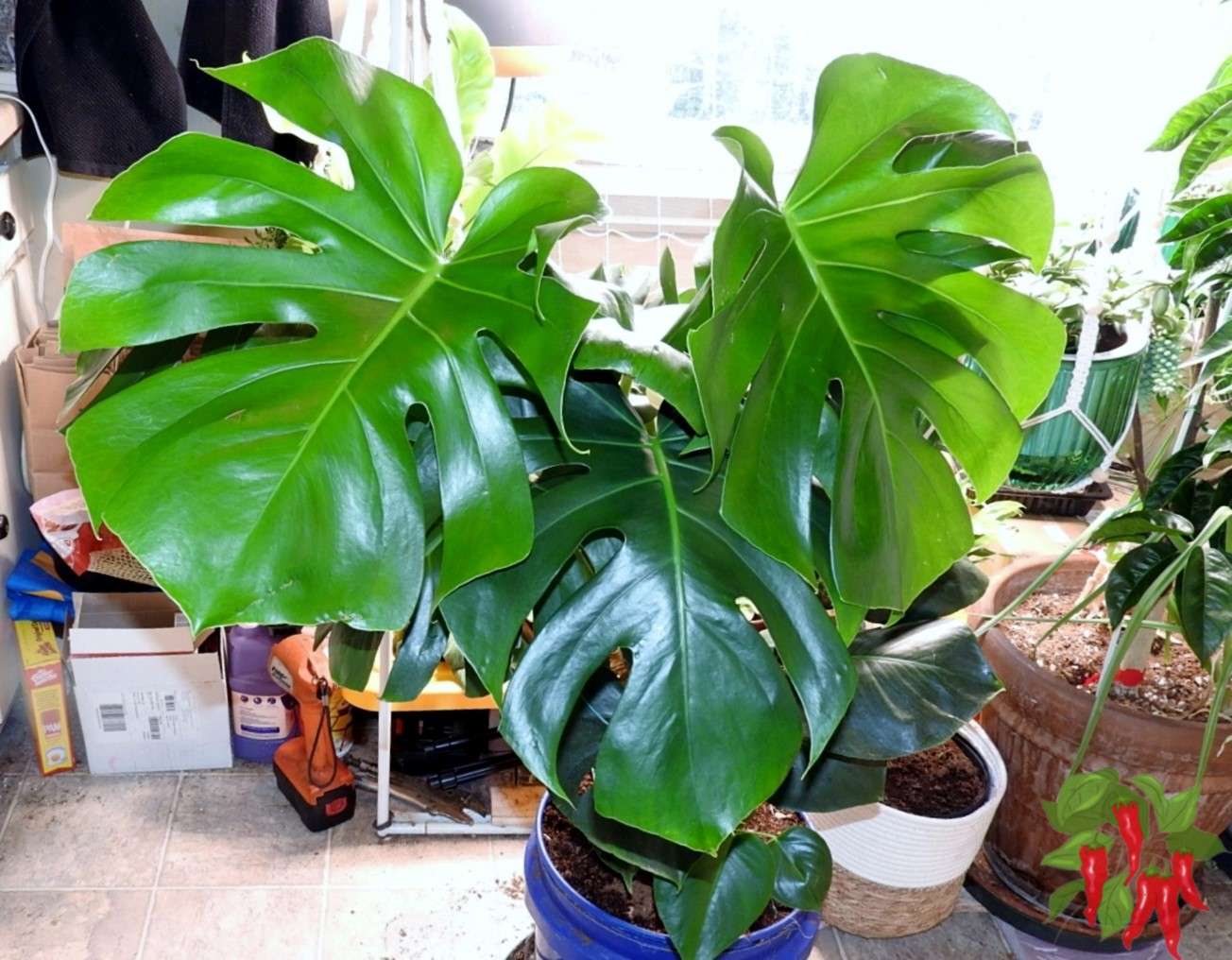
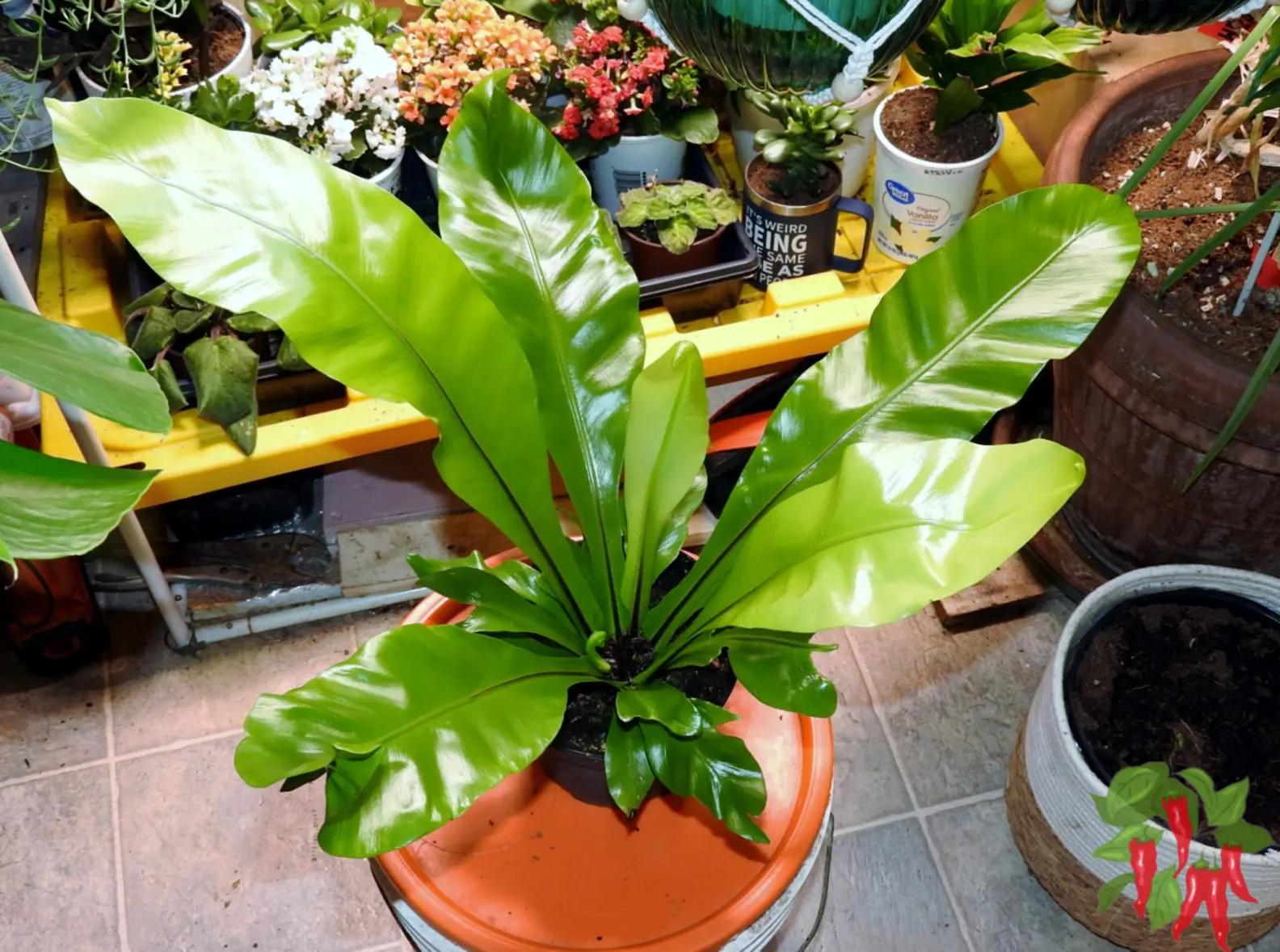
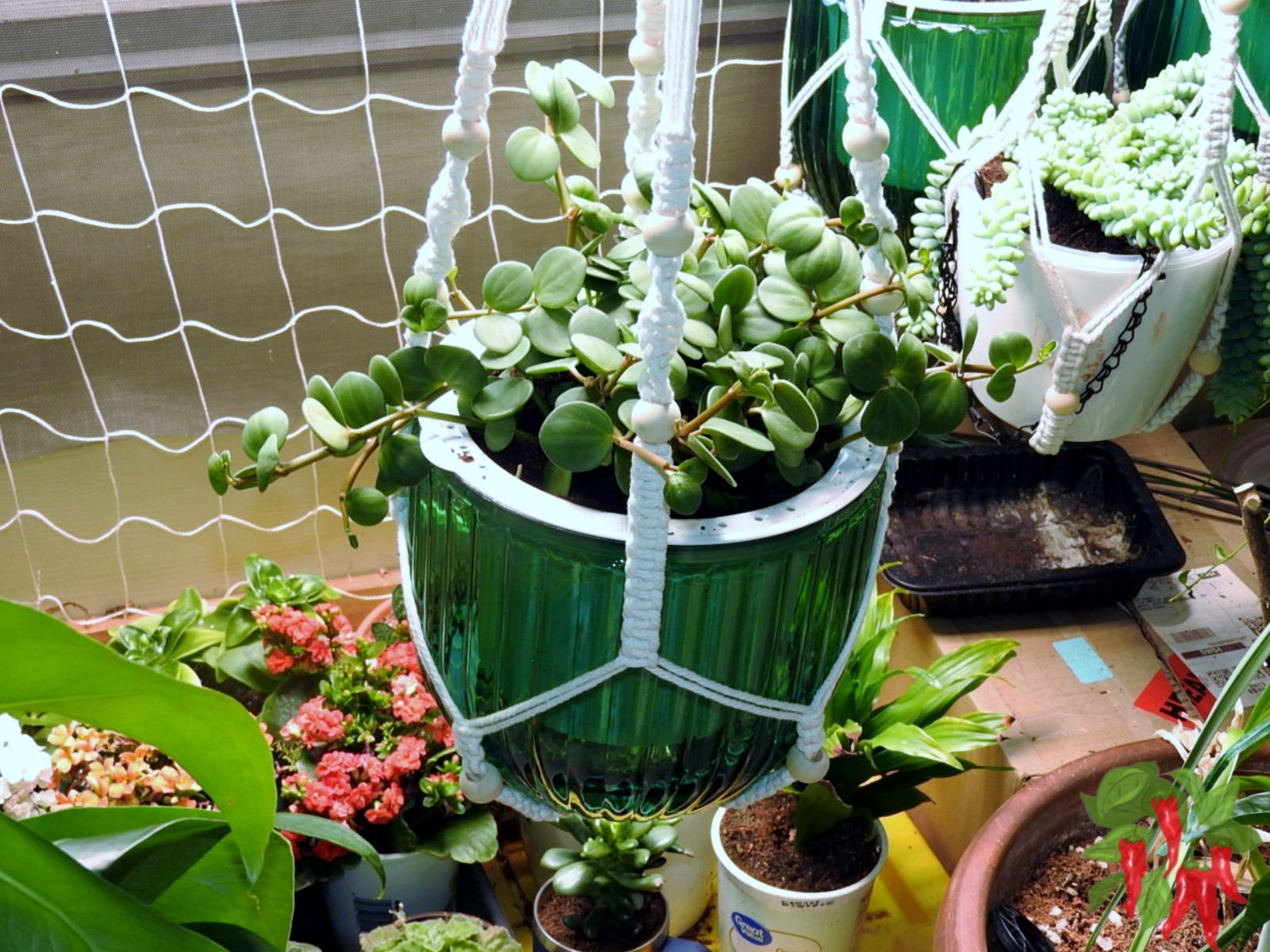
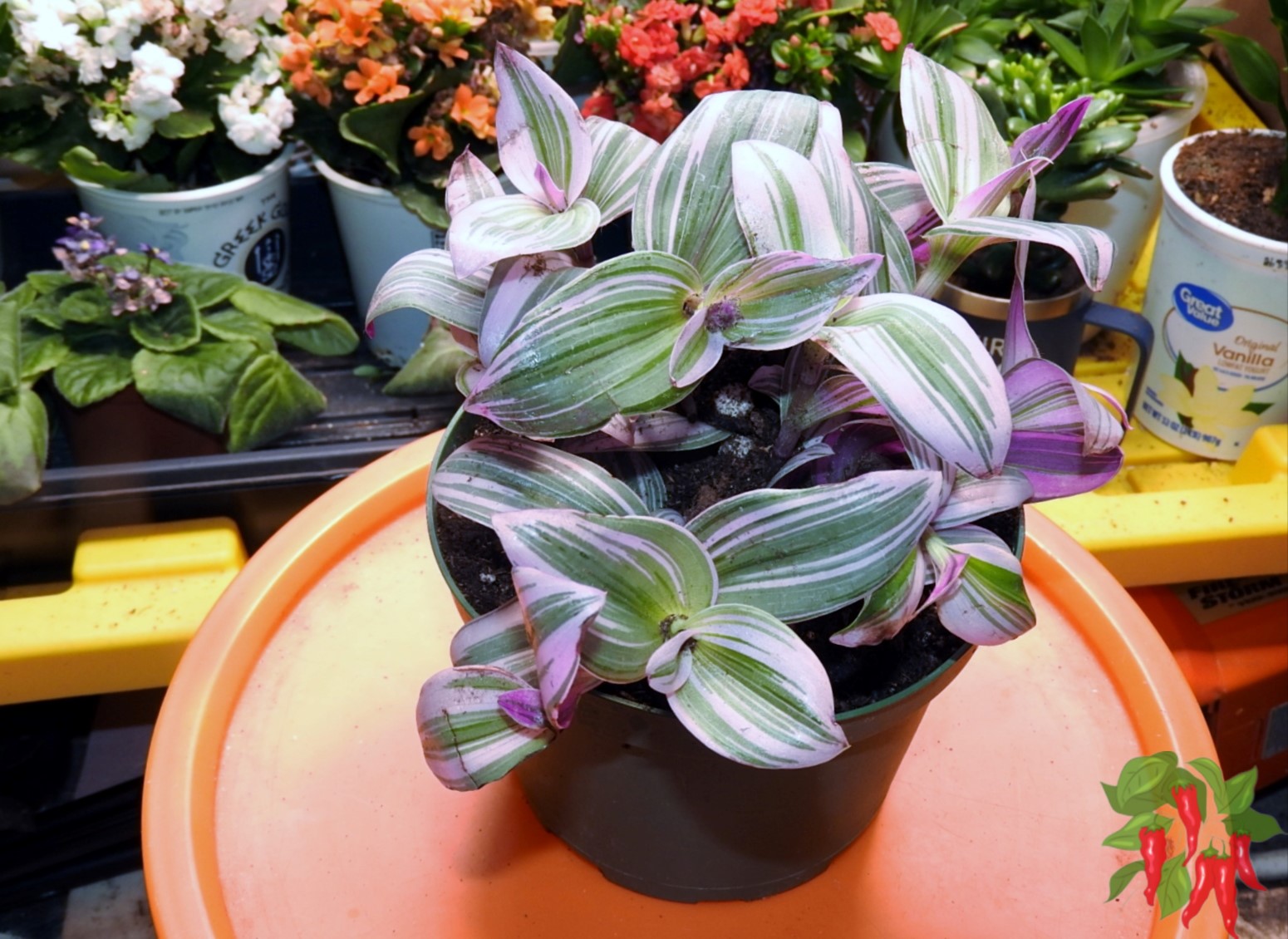

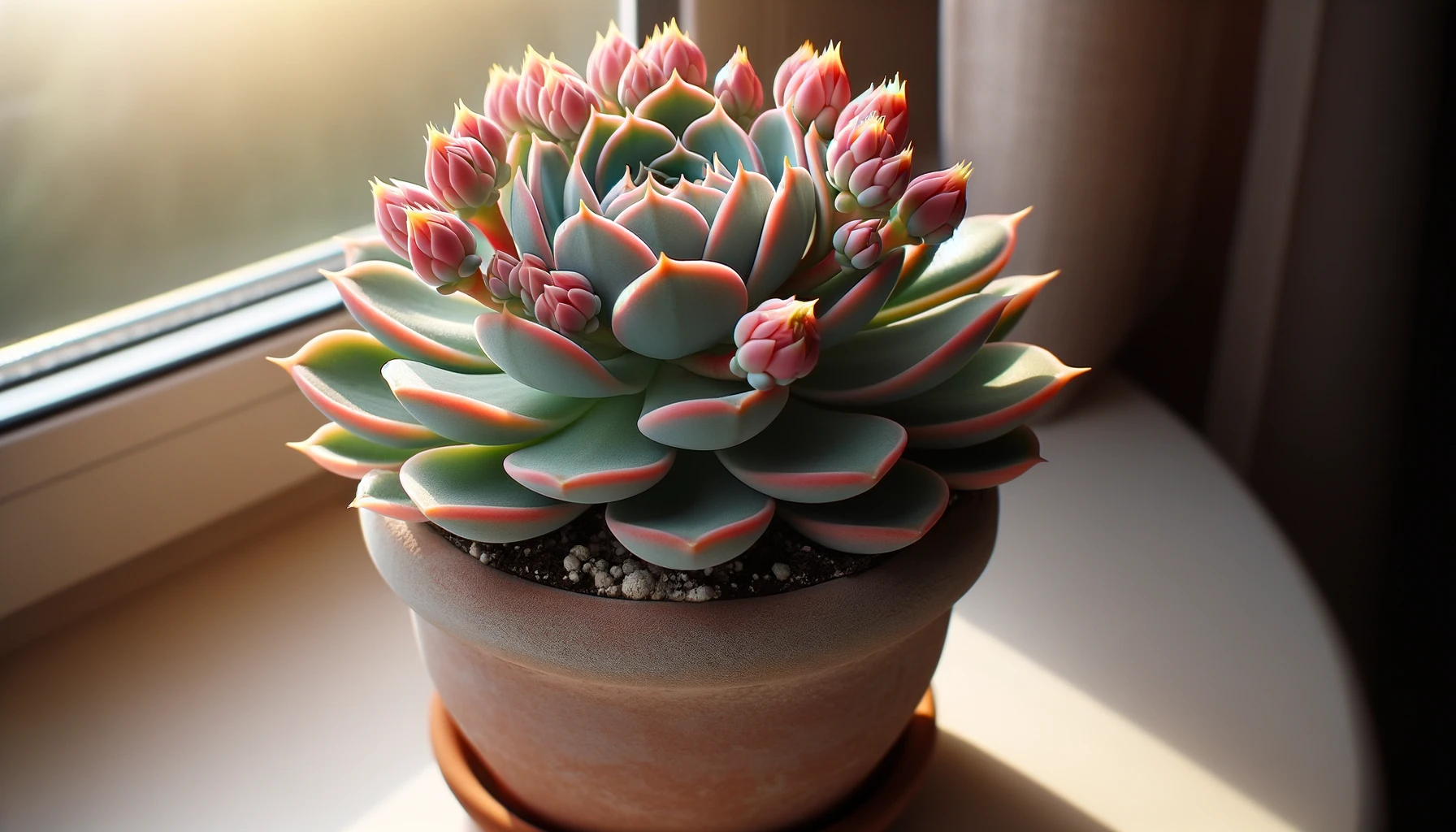
 Steve S. is the creator of
Steve S. is the creator of